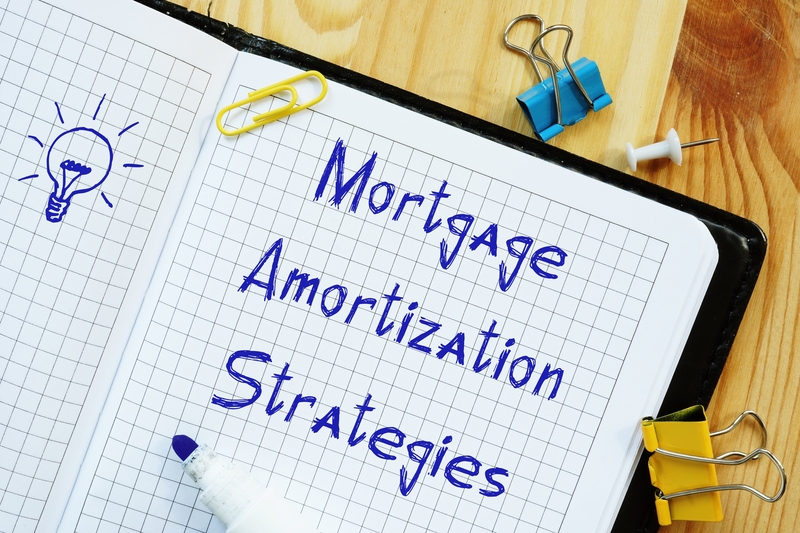
How Mortgage Amortization Works - Your Home Loan Payments
Ever felt like your mortgage payments are a bit of a black box? You're not alone. As a loan officer, I've seen countless puzzled faces when discussing amortization. But fear not! Today, we're going to crack open that box and shed some light on how your mortgage payments really work.
Picture this: You've just bought your dream home. The keys are in your hand, and you're ready to start this new chapter. Then comes the first mortgage bill, and suddenly you're wondering, "Where exactly is my money going?" Let's dive in and demystify the world of mortgage amortization together.
What's the Deal with Amortization? Start with, what is a mortgage? Try our AI Chatgpt - What is a mortgage, it includes a mortgage calculator, it explains an amortization schedule, it has an amortization schedule calculator and goes into detail about what a mortgage is. It is free, fun, easy. Read more about, How to Qualify for a Mortgage.
Your amortization Schedule
First things first - what in the world is amortization? It's not just a fancy word to confuse homeowners, I promise. Bill Banfield, executive vice president of capital markets at Rocket Mortgage, explains it beautifully:
"Amortization allows for the borrower to have a fixed payment over that time period. What it doesn't do is have an equal amount of principal and interest."
In simpler terms, amortization is like a financial roadmap for your mortgage. It outlines how each of your monthly payments is divided between paying off the principal (the amount you borrowed) and the interest (the cost of borrowing that money).
The Amortization Schedule Seesaw: Interest vs. Principal
Here's where things get interesting. Your mortgage payments aren't split 50/50 between principal and interest. Oh no, it's much more dynamic than that!
Imagine a seesaw at a playground. At the start of your mortgage, the interest side is way down, and the principal side is up in the air. This means in those early years, a big chunk of your payment is going towards interest. But don't worry, it's not staying that way forever.
As time goes on, that seesaw slowly but surely starts to level out. More of your payment begins to chip away at the principal. By the time you're in the later years of your mortgage, that seesaw has completely flipped - now you're paying mostly principal and just a little interest.
Let's break it down with some numbers. Say you have a $300,000 mortgage at 4% interest for 30 years. Your monthly payment would be about $1,432. In your very first payment:
- About $1,000 goes to interest
- Only $432 goes to principal
Fast forward 15 years, and that same $1,432 payment looks more like:
- $638 to interest
- $794 to principal
Quite a difference, right?
The Magic Formula: How It All Adds Up for an Amortization Schedule
Now, I know what you're thinking. "How on earth do they calculate this?" Well, there's a formula for that. Don't worry; I won't make you dust off your old algebra textbook. Here's the simplified version:
Principal Payment = Total Monthly Payment - (Outstanding Loan Balance X (Interest Rate/12 Months))
Sounds complicated? That's why we have amortization calculators! But understanding the basic concept can help you make sense of where your money's going each month.
Time Travel with Your Mortgage: The Power of Extra Payments
Here's where it gets exciting. You have the power to change your amortization schedule! How? By making extra payments towards your principal.
Remember our playground seesaw? Extra payments are like giving the principal side a boost. You're essentially fast-forwarding through your mortgage timeline.
One popular strategy is making biweekly payments instead of monthly ones. As Banfield points out, "The nice thing about doing it biweekly, it's actually 26 payments a year. You have the ability to pay additional principal."
This method can shave years off your mortgage and save you thousands in interest. It's like finding a time machine for your loan!
Real Talk: Is Paying Extra Always the Best Move?
Now, before you rush to make extra payments, let's chat about whether it's always the best financial move. If you bought your home when interest rates were low, you might be better off investing that extra cash or stashing it in a high-yield savings account.
Sarah Johnson, a homeowner from Seattle, shared her experience: "When I first got my mortgage, I was all about making extra payments. But then I talked to my financial advisor. Turns out, with my low interest rate, I'm better off investing that money. It was a real eye-opener!"
The Bottom Line: Knowledge is Power
Understanding mortgage amortization isn't just about satisfying curiosity. It's about empowering yourself to make smart financial decisions. Whether you decide to make extra payments or stick to the schedule, knowing how amortization works puts you in the driver's seat of your financial journey.
Remember, your mortgage is likely the biggest financial commitment you'll make. Don't be afraid to ask questions, crunch some numbers, and really understand where your money's going. After all, it's your home and your future we're talking about!
So, the next time you look at your mortgage statement, you'll be able to nod knowingly at that amortization schedule. You've got this, future homeowner!
Ready to dive deeper into the world of mortgages? Have questions about your specific situation? Check out our home buyer education course.






